Myxomycetes: Nature’s Hidden Gems!
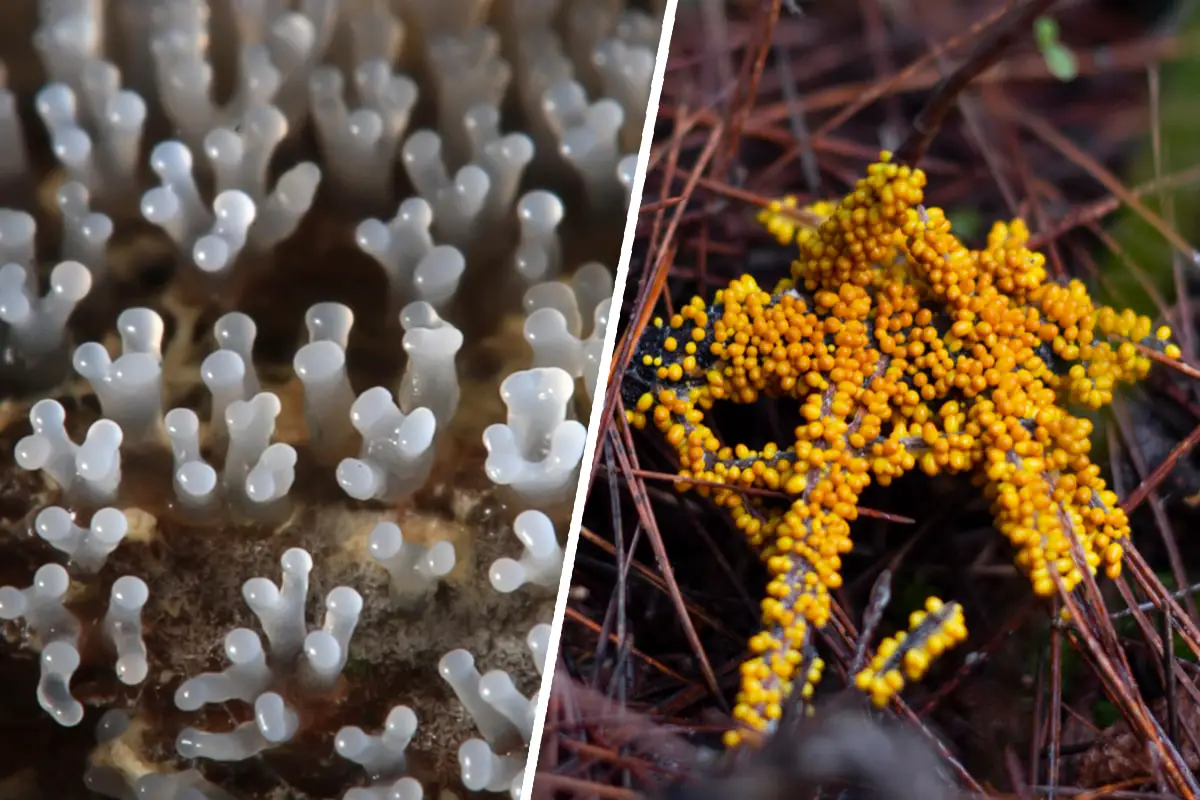
Myxomycetes or slime molds present a remarkable array of life cycles and ecological roles. From their beginnings as single cells to their complex interactions within forest ecosystems, these organisms demonstrate adaptability and resilience. Understanding their life stages, cognitive abilities, and evolutionary history offers insight into the world of these often-overlooked entities.
Diverse Life Cycles of Myxomycetes
Myxomycetes, or slime molds, showcase diverse life cycles. They start as single cells, similar to amoebas. Cellular slime molds typically live independently until stressed by factors like food shortages or the need to reproduce. In response, they release chemical signals to gather into a swarm.
Plasmodial slime molds take a more communal approach. Thousands of cells fuse into one giant, membrane-enclosed entity with multiple nuclei. This interconnected mass moves with purpose.
The general life cycle of slime molds involves:
- Spores released into the environment
- Transformation into single-celled organisms
- Amoeba-like beings spread out, consuming bacteria and fungal spores
- Transformation into sporangia when resources are depleted
- Release of spores to restart the cycle
Tanya Latty from the University of Sydney notes that slime molds move through their environment without a central brain, similar to social insects. This decentralized decision-making process means each part of the plasmodium has a role, but there’s no central control.
Slime molds can solve mazes without neurons and exhibit habituation, adapting to unpleasant conditions like high salt levels if a reward is present. Some, like Physarum polycephalum, can even “remember” previous experiences with certain environments after lying dormant for extended periods.
From single cells to multicellular organisms, the life cycle of myxomycetes highlights a system refined over a billion years of evolution.
Ecological Roles and Interactions
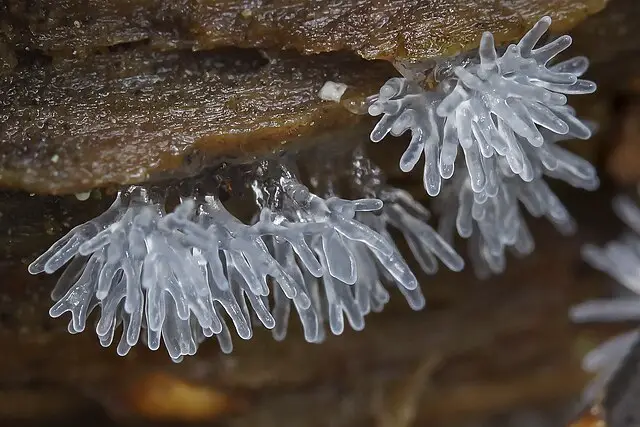
Myxomycetes play crucial roles in forest ecosystems. They thrive in shady, cool, and moist environments like decaying leaves and logs. These organisms act as nature’s cleanup crew, consuming bacteria, fungal spores, and organic debris. This feeding behavior helps break down and recycle nutrients, contributing to soil enrichment.
The migratory plasmodium stage of myxomycetes can travel when food becomes scarce, affecting the spread of nutrients and microbial health across their environments. By scavenging on the forest floor, they help maintain ecosystem balance and participate in the nutrient cycle.
The formation of sporangia serves both reproductive and ecological purposes. These structures release spores into the air, which settle in new locations, spreading myxomycete activity and contributing to ongoing nutrient recycling.
“Despite their fundamental role, the full extent of myxomycetes’ ecological functions remains somewhat unclear. Researchers are investigating potential mutualistic relationships with other microorganisms and their possible role as bioindicators of forest health.”
In essence, myxomycetes act as custodians of the forest world, weaving through decaying matter, feeding, cycling nutrients, and participating in complex, often hidden interactions that contribute to overall ecosystem health.
Cognitive Abilities of Myxomycetes
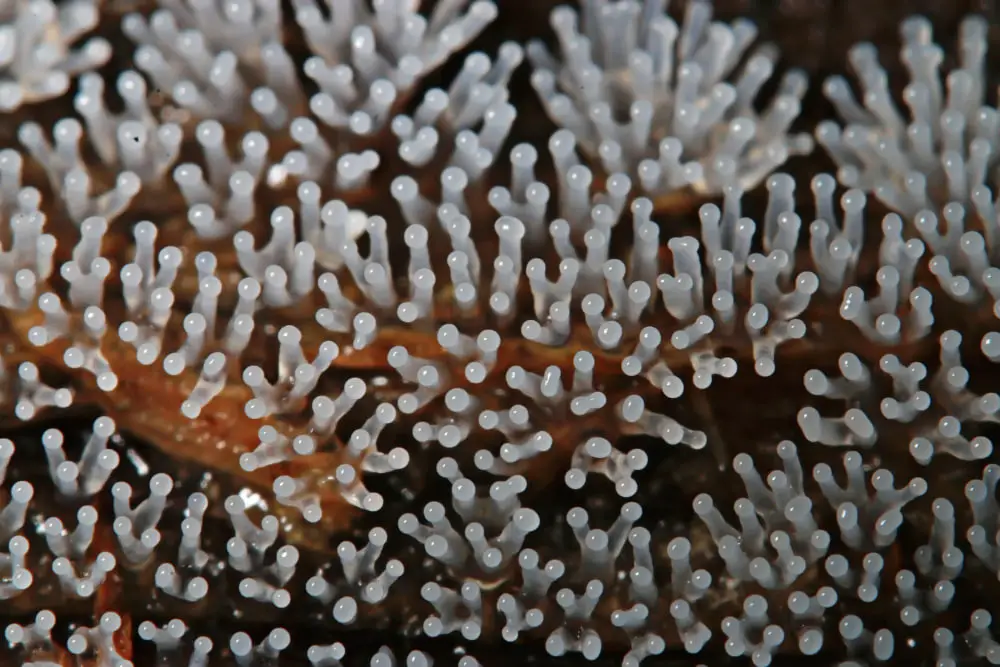
Despite lacking brains, slime molds demonstrate remarkable cognitive abilities. Physarum polycephalum, for instance, can solve mazes by spreading out and retracting filaments until it finds the quickest route to food.
Slime molds exhibit habituation, adapting to less-than-ideal conditions like acidic or salty environments, especially when food rewards are present. Over time, they become accustomed to these unpleasant surroundings.
Physarum polycephalum has shown the ability to “remember” and adapt based on past experiences. If it encounters a familiar environment after a period of dormancy, it can quickly readjust based on its previous exposure.
This problem-solving ability without a central nervous system is comparable to the decentralized intelligence of octopuses, whose neurons are spread throughout their bodies. Both slime molds and octopuses demonstrate that extraordinary intelligence doesn’t always require a centralized brain.
The cognitive prowess of slime molds highlights an example of convergent evolution, where distinctly different organisms evolve similar traits for problem-solving and adaptation.
Evolutionary History and Fossil Evidence
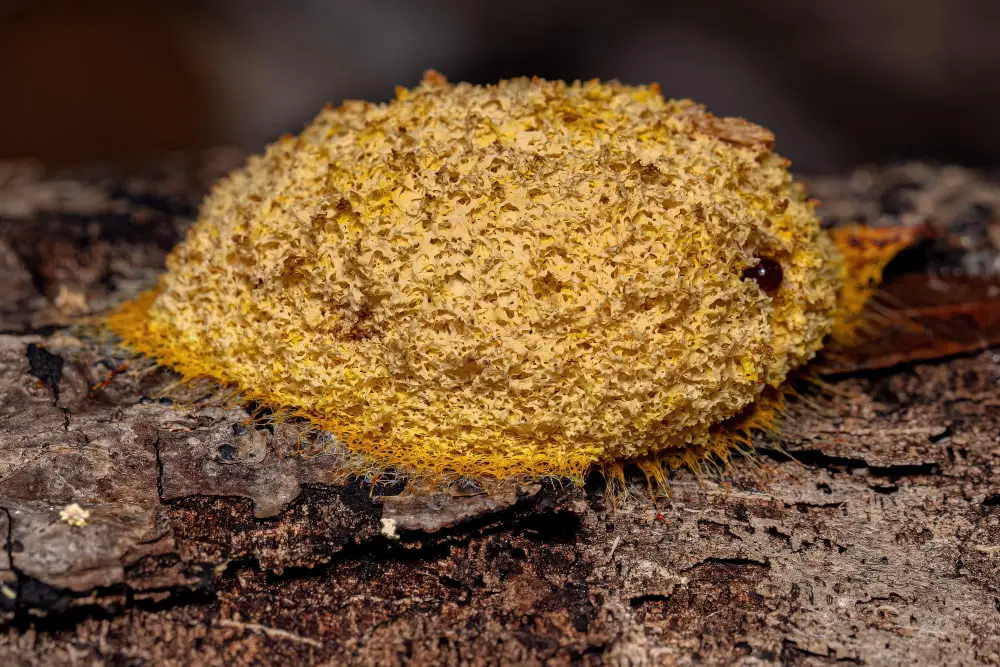
The evolutionary journey of myxomycetes stretches back to ancient times, with fossil evidence providing crucial insights. A notable discovery is the 100-million-year-old amber-preserved Stemonitis, offering a fossilized snapshot of myxomycete history from the mid-Cretaceous period.
This fossil demonstrates the remarkable stability of myxomycete characteristics over millions of years. The preserved specimen closely resembles modern descendants, suggesting that the form and function of myxomycetes were already highly optimized long ago.
Key features of the fossil include:
- Almost perfectly preserved sporocarps
- Complete stalks and sporangia
- Complex capillitial network within the sporangia
The complex capillitial network within the sporangia, crucial for effective spore dispersal, remains a central feature unchanged across eons. This underscores the evolutionary advantage of such structures in aiding widespread colonization and survival.
The discovery of such an ancient, yet nearly identical, myxomycete supports the idea that these organisms have consistently played significant ecological roles. Their ability to enter dormant stages that can outlast extreme conditions offers an evolutionary advantage, allowing them to persist through challenging periods.
As researchers continue to unearth more fossilized evidence, each find contributes to our understanding of myxomycetes and the nature of evolutionary resilience and adaptation.
Adaptations and Survival Mechanisms
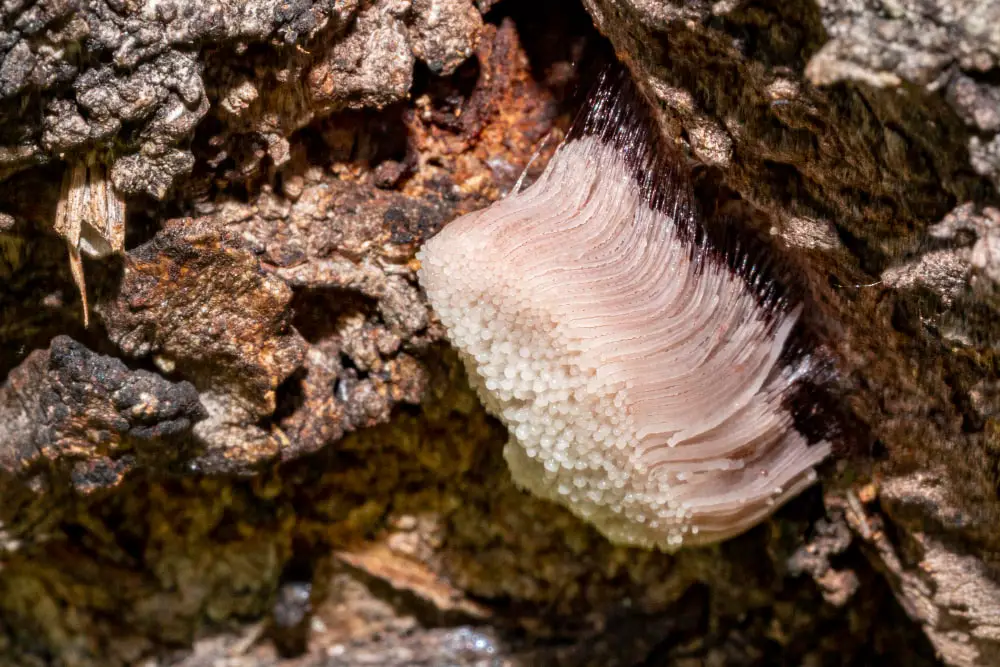
Myxomycetes, or slime molds, have developed remarkable resilience over billions of years through an array of survival mechanisms. Their ability to form dormant stages like microcysts and sclerotia is key to their adaptability.
When faced with challenging conditions such as drought or extreme cold, myxomycetes can transform into microcysts – tiny, tough-walled cells that act as hibernation pods. These microcysts allow the organism to survive unfavorable environments for extended periods.
Sclerotia formation is another crucial strategy. In this state, the slime mold converts itself into a hard, resilient mass capable of withstanding drought, freezing, and even radiation. This form of cryptobiosis, or suspended animation, protects the organism’s vital components until environmental threats subside.
These dormant stages provide a buffer against environmental fluctuations, particularly in diverse habitats like tropical forests. For instance, during dry spells, the plasmodium can condense into sclerotia and wait for the return of rain, ensuring survival and efficient resource exploitation when conditions improve.
Additional Adaptations
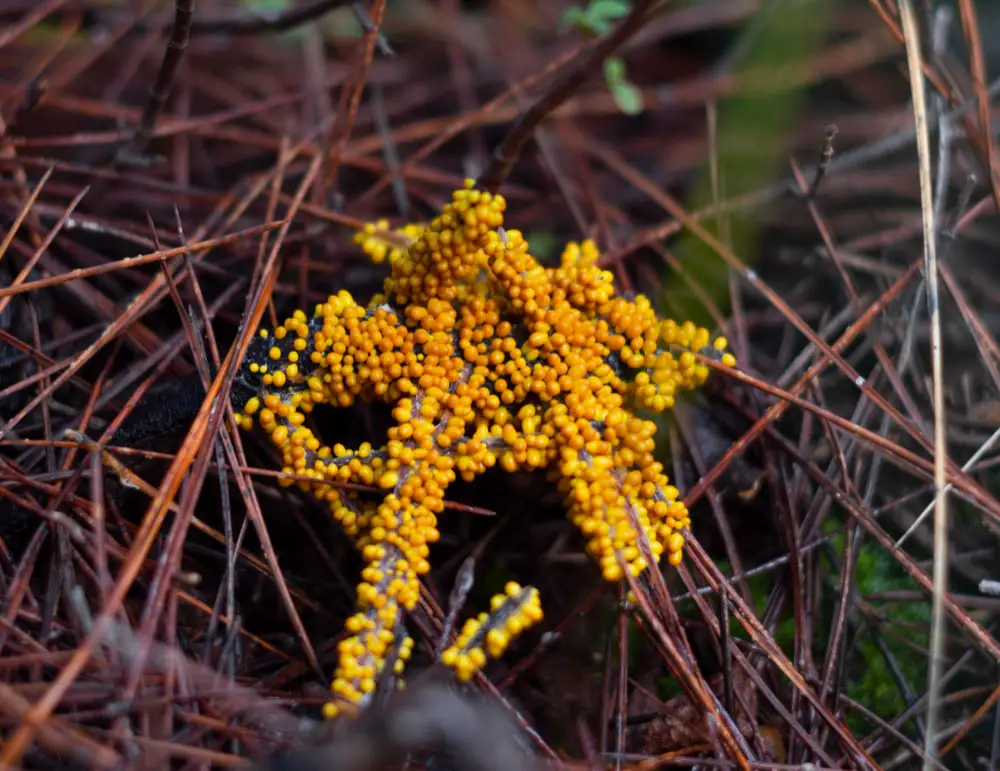
Myxomycetes have additional adaptations that contribute to their survival:
- Amoebal phases: Well-suited for dispersal and nutrient acquisition, allowing exploration of various microhabitats and feeding on bacteria and other microorganisms.
- Spore production: Creates sporangia for reproduction and long-distance dispersal. These spores are highly resilient, capable of surviving extreme environments and long periods of dormancy.
- Cyclical life cycle: The ability to disperse, go dormant, and re-emerge ensures a constant presence in their habitats, regardless of changing environmental conditions.
The strong environmental selection pressures on myxomycetes have contributed to their phenotypic stasis. Many features, from the structure of fruiting bodies to spore dispersal mechanisms, have remained largely unchanged over millions of years. This evolutionary consistency indicates a finely tuned balance between form and function.
“In essence, the resilience and longevity of myxomycetes stem from their impressive adaptability. From durable dormant stages to efficient spore dispersal, these slime molds have mastered survival techniques that allow them to thrive in the face of various challenges.”
Myxomycetes showcase an extraordinary journey from single cells to complex organisms, playing crucial roles in nutrient cycling and ecosystem balance. Their ability to adapt and survive through various mechanisms highlights a finely tuned system that has persisted for millions of years. As research continues, these ancient organisms provide valuable insights into the enduring principles of life and survival.
